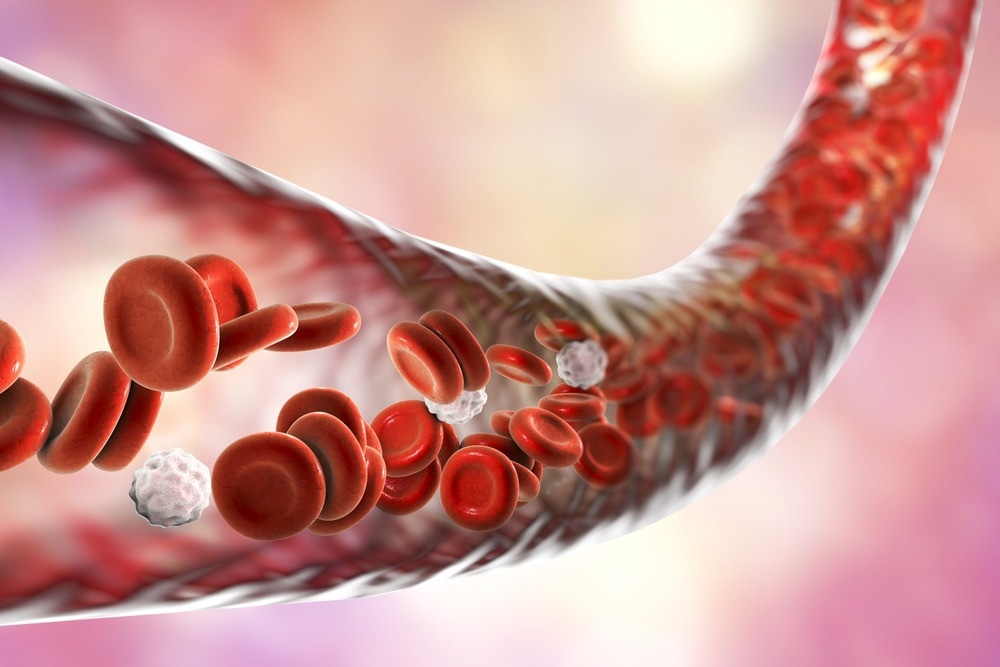A study published in Micromachines proposed a multi-sensor-based, compact, cuffless blood pressure (BP) monitoring system that combines a piezoelectric sensor array with an optical sensor to monitor the blood pressure data from the radial artery.

Study: An Arterial Compliance Sensor for Cuffless Blood Pressure Estimation Based on Piezoelectric and Optical Signals. Image Credit: Kateryna Kon/Shutterstock.com
Significance of Monitoring Blood Pressure
Blood pressure (BP) is a vital medical and physiological parameter influencing patients' treatment decisions. When blood pressure deviates from the usual range, it can cause various disorders, including hypertension, leading to chronic heart disease, kidney disease, and other health issues.
Blood Pressure Monitoring Devices
Patients can benefit from non-invasive ambulatory blood pressure monitoring (ABPM) devices that continuously monitor their blood pressure. However, ABPM requires irregular inflated cuffs, which interfere with a patient's daily activities, cause discomfort, and reduce treatment compliance with blood pressure monitoring.
Therefore, a cuffless BP monitoring device is required that should be effective and comfortable to increase the patient's willingness to use it.
BP estimation using pulse arrival time
Early cuffless BP monitoring devices calculated the time difference between photoplethysmography (PPG) and electrocardiography (ECG) to estimate the pulse arrival time (PAT).
Since PAT and arterial compliance are correlated, BP can be calculated using regression techniques. However, subsequent investigations have shown that the impact of the pre-ejection period on PAT renders the regression method inaccurate for estimating BP.
BP estimation using pulse transit time
Most modern BP measuring devices use pulse transit time (PTT) to estimate BP. PTT is the difference in time between two pulse waves on the local artery. The transmission of pulse waves occurs more quickly than blood movement.
Moreover, measuring the PTT of an artery can indicate intra-arterial pressure correlation. PTT does not have PAT's vulnerability to the pre-ejection period; therefore, it can reliably estimate BP.
The PTT-blood pressure calibration curve depends on blood density, arterial geometry, and stiffness. Except for blood density, all other arterial metrics are patient-specific, and experimental data imply that the calibration curves differ between individuals.
Therefore, creating a unique calibration curve for each patient will be the most optimal method. However, the downside of this strategy is evident, as it increases the operational complexity of the calibration process.
Numerous studies have shown the development of various technical PTT measurement methods. However, calculating BP from PTT in this research required regression models to calibrate the BP curve.
Due to advances in machine learning, various researchers have employed machine learning approaches to estimating BP. However, different hyper factors, including demographics (which are patient-specific), are required for machine learning models to predict blood pressure.
Moreover, deep learning's computational demands are also inappropriate for embedded systems with limited processing capability.
Using a Piezoelectric Cuffless Device to Monitor Blood Pressure
This study helped designed a small cuffless blood pressure measuring device for blood pressure monitoring.
Twenty individuals were chosen for the blood pressure monitoring project. After measuring the patient's blood pressure, the cuffless BP monitor transmits the findings to a smartphone, which shows and stores the patient's BP data.
The Moens–Korteweg (MK) equation was used to link pulse wave velocity (PWV) with vascular compliance and estimate blood pressure. Therefore, researchers propose a unique approach to estimating arterial parameters by combining the measurements of a piezoelectric sensor array for PWV measurement and an optical sensor for photoplethysmography intensity ratio signal measurement.
The P- β model developed from the MK equation was used to estimate BP based on the parameters recorded by various sensors. Finally, the estimated BP was compared with a reference device to validate the results.
Important Findings of the Study
Based on the P–β mode, Systolic blood pressure (SBP) was 0.75 ± 3.9, and diastolic blood pressure (DBP) was 1.1 ± 3.12. The P- β model incorporates arterial compliance into BP prediction and is more precise than the regression model regarding BP estimation accuracy.
Notably, it also meets the performance indicators of ANSI/AAMI/ISO 81060-2:2018. The proposed cuffless BP monitor is not only portable and inexpensive, but it also incorporates additional physiological properties into BP estimation, leading to more precise readings.
The proposed system design is more flexible than traditional cuffless technology as it can be implemented in wearable devices or specific BP monitoring environments with limited spaces.
The proposed design is simpler and more comfortable than conventional BP monitoring methods, resulting in increased patient adherence to BP monitoring and a more accurate hypertension diagnosis.
Limitations and Future Works
The piezoelectric sensor monitors the PTT of the nearby arteries, and because of the short distance, the error is amplified when converted to PWV, which results in inconsistency. Therefore, in practical application, the PTT's median value during the measurement period must be used for the BP estimation.
In the future, beat-to-beat BP measurement will be achievable by improving the mechanical structure design of the device, which will lower measurement error and enable accurate beat-to-beat BP measurement.
Reference
Guo, C.-Y., Chang, H.-C., Wang, K.-J., & Hsieh, T.-L. (2022). An Arterial Compliance Sensor for Cuffless Blood Pressure Estimation Based on Piezoelectric and Optical Signals. Micromachines, 13, 1327. https://www.mdpi.com/2072-666X/13/8/1327/htm
Disclaimer: The views expressed here are those of the author expressed in their private capacity and do not necessarily represent the views of AZoM.com Limited T/A AZoNetwork the owner and operator of this website. This disclaimer forms part of the Terms and conditions of use of this website.